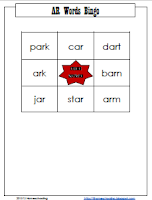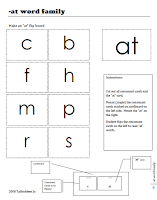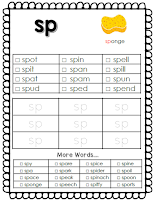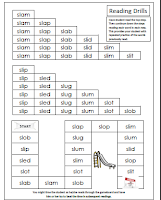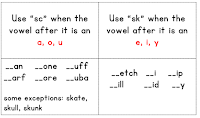
Long Vowels - Consonant+E, Consonant+O (We, Go...)
Consonant + E (be, he, me, she, we)
In short letter words that end with a consonant and an "e," the "e" make the long e sound (says its name)
Consonant + O (no, go, so)
In short letter words that end with a consonant and an "o," the"o" make the long o sound (says its name)

R Controlled Vowels - AR, ER, IR, OR, UR
AR
AR Learning Pack - contains an AR word list, bingo, tic tac toe, picture cards, bingo
ER
ER Word List (with sample sentences)

IR
Nothing here yet!OR
OR Matching Cards - TJ Homeschooling
OR word list
Fill in the blank with the correct OR word
Circle the correct OR word shown in the picture
Trace the "or" phonogram, then trace words containing the phonogram and draw a picture to mach.
UR
Nothing here yet!

Simple Daily Phonics Routine
1. Introduce the Phonogram
- Show the phonogram, say the phonogram name and give its sound - have student repeat the sound (several times)
- Show student word list of words that contain the phonogram; read the words, have student read the words
- Have student trace or write the phonogram several times; have student say the sound the phonogram makes as he/she traces or writes.
2. Sound Practice
- Have student identify words that start with or contain the phonogram
- Give student a worksheet or other activity where pictures are shown and they must circle/identify which words start with or have the phonogram in them.
- You can alternatively call out words and student must tell you (or alternatively trace/write the phonogram) when a word contains the phonogram.
3. Reading Practice - Words
- Have student read the words several times (I like to make a gameboard or ladder and write the words in the gameboard spaces or rungs of a ladder so it doesn't feel so much like a drill to read the words).
4. Reading Practice - Sentences
- Have student read sentences that have words that contain the phonogram.
5. Spelling (optional)
- Have student sort the word list (for example, by the short vowel it contains, number of letters, etc to give students face time with the words.
- Have student alphabetize the words (to give students more face time with the words)
- Have student complete a word search or crossword puzzle (again, for more facetime)
- Give student dictation on the words (another way is to give student the definition or clue for the word and they must write the word from their list that matches)
6. Sentence Writing
- Have student compose sentences with the words on their word list (can break up into more than one day if the list is long). You might give student a theme to write around for motivation. Try to have student use varied sentences (statements, questions, commands, exclamations). You can have student pick out the subject and predicate of their sentences, parts of speech, etc for grammar review. If you've just worked on a particular grammar concept, have your student incorporate that into their sentences.
7. Craft (optional)
- Make a craft that is related to a word that contains the phonograms (and incorporate words that fit the phonogram pattern on the craft; example, if learning the phonogram "p" make a construction paper pizza craft, the words that contain the phonogram could be written on paper pepperonis.)
Tips:
Begin each session with review of previous phonograms (can be as simple as using flashcards) and end each session with review of the current phonogram (can be as simple as having student tell the sound the phonogram makes)
If student needs more than 1 day with a phonogram, use the routine over again substituting in new activities to keep it fresh.
With this routine, you are hitting many areas each time: sound recognition, sight recogntion, reading, spelling, writing, grammar, and listening.

Short Vowel (a,e,i,o,u) Resources
Short Vowel A
I've never really taught word families (i.e. -ad, -ag, -an, etc) because I prefer to focus blending at the beginning of the word, but some years ago, someone requested word families, so I put together a few resources here and there on word families. I know many people teach by word families, so if you do, I hope you can find these few resources helpful.
Set of 16 word/picture matching cards to practice the short vowel e
Short Vowel I
(I usually just use the gameboards as a fun way to do reading drills)
Short Vowel U
Nothing here yet!
All Short Vowels (A, E, I, O, U)
Ok, so technically not boards, but, yet not just a word list.......
I made these up for my first grader so that she can easily practice reading short vowel words, in shaa Allah. There are around 4 "boards" for each of the five short vowels (a, e, i, o, and u).
Instead of focusing on word endings (as in done with word families), In CVC (consonant-vowel-consonant words) I have always liked to focus on the beginning of the word (the initial consonant and first vowel). I found that when we used word families and focused on the endings, words sounded more like cuh-at, buh-at.
In these word boards, as you can see, the first two letters are underlined because I want my daughter to focus on blending those two and adding the end sound. Before using the boards, we did drills on having her blend just the two beginning letters, so we read ba, ba, ba, ba, ca, ca, ca, etc. (in shaa Allah, I'll post our "gameboards" that we used for that). When she was able to look at those beginnings and read fluently, then we went onto adding the ending letter/sound to read words. (I got this idea from one of the old school phonics books at DonPotter.net)
Finally, in the word boards, you'll see baseball and doughnut pictures. My daughter (as many kids) has trouble distinguishing between the b's and d's so I put the pictures above b's and d's so that she could figure out the word on her own, in shaa Allah. (There are also zippers for words like "has" and "his.")

SH!!!!!!!! Learning the SH Digraph
Starfall - Learn the Sound of SH - Great interactive way to introduce the sh digraph
Word Lists
Sh Word List - 6 page PDF, this mega, categorized list is nice so that you can pick words that fit your student's skill level from beginning to advanced. (If you change the "sh's" in the URL to different digraphs, you can find different lists (I tried, ch, th)SH Word and Sentence List (TJ Homeshooling)
SH word list and sentences for reading and dictation. I made this one up for my near beginners who had only tackled a few phonograms past the short vowels.
Printables/Activities
- SH Teaching Packet from Scholastic
- My Little SH Book - Freebie from TpT
- SH Learning Pack Carl's Corner
- SH Printables SparkleBox
- Simple SH Cut and Paste Activity
- Shark Theme First School
- SH Digraph Game - This Reading Mama.com
Games/Interactives
- SH Online Game - KizPhonics
- SH Spelling Online Game - GalacticPhonics
Craft Ideas
- Ship Craft - Pinterest
- Turtle Shell Craft - Pinterest
- Consonant Digraph Garden - Pinterest
- SH Fish Craft - OwlBeTeachingYou.com

Beginning S Blends: SC, SK, SL, SM, SN, SP, ST, SW
Two letter beginning blends that start with "s": sl, st, sp, sn, sc, sw, sk, sm
Resources that Contain more than 1 S blend
- S Blends Word Lists (TJ Homeschooling) - word lists for sl, st, sp, sn, sc, sw, sk, sm. The main word lists are for beginning students who have basically only learned the 5 short vowel sounds; the secondary list contains words for more advanced students who have learned other phonograms. Also include tracing practice for each blend.
- S Blends Bingo (Freebie from TpT)
- S Blends worksheet - Education,com
- S Blends Online Game (Soft Schools)
- S Blends File Folder Game (FileFolderFun.com)
- S Blend Worksheets - Soft Schools
- Beginning S Blend Bump Game (Freebie from TpT)
- S Blends worksheet - Englishworksheetland.com - fill in the correct s blend to complete the pictured word
SC
- Circle pictures that start with SC (Enchanted Learning)
- Write SL Words and then write each in a sentence (Enchanted Learning)
- SC Blend Activities Pack - Carl's Corner
- SC vs. SK - Scroll down
SK
- SK Consonant Blend word list and worksheets - Enchanted Learning
- SK Blends activity pack (Carl's Corner)
- SK vs. SC - Scroll down
SL
- SL Learning Pack (TJ Homeschooling includes TicTacToe and reading drills)
*SL Blends Learning Pack (Word version) - (I provided the Word document as the flashcard did not print out well on a 3x5 card in PDF form. You can print it directly onto a 3 x 5 card from Word:
Other Resources on the Net:
- Circle pictures that start with SL (Enchanted Learning)
- Write SL Words and then write each in a sentence (Enchanted Learning)
SM
- SM Blend Activities packet (Carl's Corner)
- SM Blend worksheet (Study Ladder)
SN
- Circle the pictures that start with SN (Enchanted Learning)
- SN Blend activity pack - Carl's Corner
SP
- Circle the pictures that start with SP (Enchanted Learning
- SP Activity Pack - Carl's Corner
ST
ST Blend Learning Packet from TJ Homeschooling
The learning packet contains:
- ST Beginning blends word list
- Sample daily phonics routine
- Sentences that contain the “st” beginning blend (for copywork, dictation, etc).
- Reading drills
- ST Beginning blends Tic-tac-toe Boards
- Handwriting worksheet
- ST beginning blend 2 sided flashcard
ST Resources elsewhere on the net:
- Circle pictures that start with ST
- ST Blend Activity pack - Carl's Corner
SW
- SW blend activity pack (Carl's Corner)
- SW Worksheet (Study Ladder)
- Write words that start with SW and write them in sentences - Enchanted Learning
SK vs. SC Blends
General Rule (there are exceptions):
(for the sc with the hard c sound)
Spell with "sk" when the vowel after it is a "e," "i,", or "y"
Spell with "sc" when the vowel after it is a "a," "o," or "u" or when a consonant follows the blend
Some exceptions: skull, skate, skunk
- SK or SC worksheet - Study Ladder
- SK or SC worksheet - Have Fun Teaching
- SK or SC worksheet - Primary Leap.co.uk
Subscribe to:
Posts (Atom)








